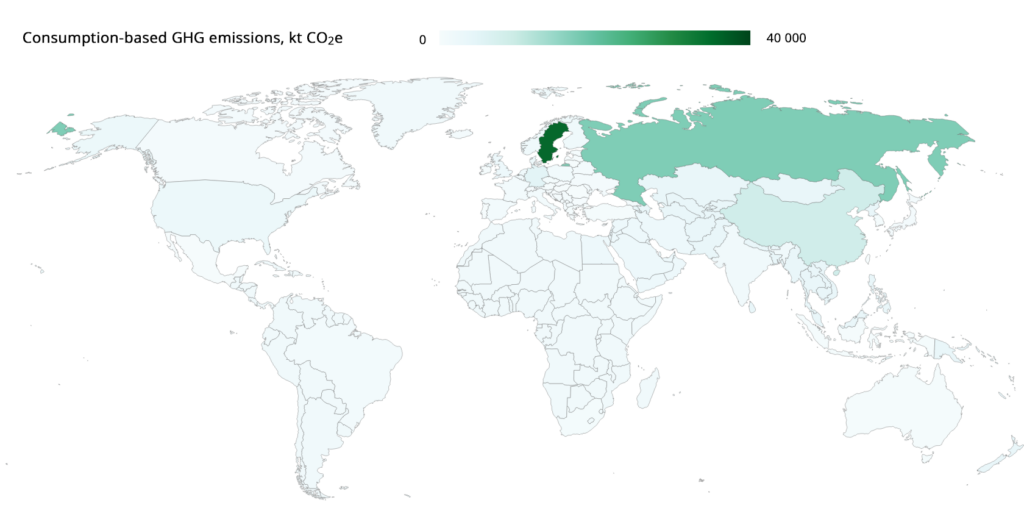This article presents “hotspots” results from the PRINCE project.
The PRINCE research project created a unique model to calculate the environmental pressures linked to Swedish consumption. As well as providing national-level macroindicators, the model also estimated in which countries along Sweden’s supply chains the pressures were exerted, and which categories of goods and services consumed in Sweden they were associated with. This article presents the method and headline results concerning which product groups were most responsible for the environmental pressures, and in which countries they occurred.
The following environmental pressures are analysed: use of land, blue water and material resources; emissions of greenhouse gases (GHGs), and of the major air pollutants sulphur dioxides (SO2), Nitrogen oxides (NOx), and particulate matter (PM 2.5 and PM10). The results were calculated using a hybrid model combining the multiregional input-output (MRIO) database EXIOBASE with data from the Swedish economic and environmental accounts. The product groups were bought for private or government consumption or through capital investments, and are categorized as per the Swedish economic accounts.
The results show that in 2014 – the latest year for which the model shows results – all of the environmental pressures “embedded” in the products consumed in Sweden occurred overwhelmingly abroad, with the exception of land use.
The article also compares these consumption-based pressures with the total pressures occurring on Swedish territory (production-based pressures). In this case, all consumption-based pressures are once more significantly larger than production-based pressures, except in the case of land use and material resource use.

Geographic distribution of PM2.5 emissions associated with production of six hotspot product groups consumed in Sweden. Generated with PRINCE data using Flourish.
The most important product groups across the different environmental pressures are construction, food products and direct emissions from, or use by, households (except for sulphur dioxide emissions and materials use for the latter product group).
Other product groups that are found to have environmental pressures across several indicators are wholesale and retail services, architecture and engineering, real estate, motor vehicles, and other machinery and equipment.
However, for the three natural resource pressures – use of water, land and material resources – agricultural products are a relatively important product group, along with products from forestry for the latter two indicators.

The geographical distribution of greenhouse gas emissions linked to producing goods and services for Swedish consumption in 2014. Generated with PRINCE data using Flourish.
Outside Sweden, China is most notable among the countries where pressures from Swedish consumption occur, and is among the top five countries for all emissions to air, as well as blue water and material resource use. Other countries or regions that rank highly for certain product group-environmental pressure combinations are Rest of Asia and Pacific (i.e. Asia and Pacific except Indonesia, Taiwan, Australia, India, South Korea, China and Japan), Russia, Germany, Denmark and Spain.
This pattern of geographically dispersed pressures caused by Swedish consumption indicates the need to address the pressures at several levels of collaboration: national, within the European Union, bilateral and international.
The article is a key output from the PRINCE project and is part of a special section of the Journal of Cleaner Production dedicated to the project.
Design and development by Soapbox.